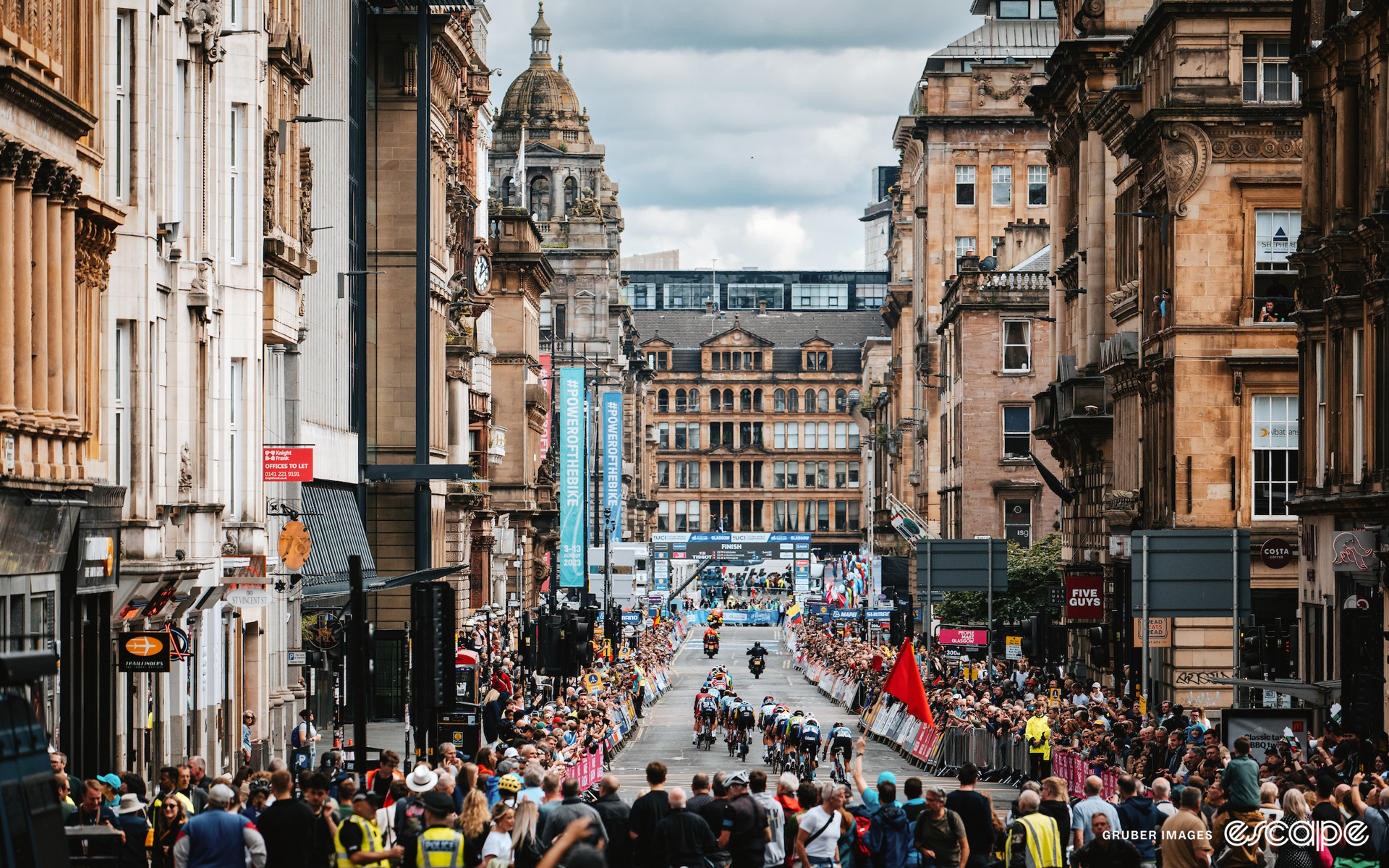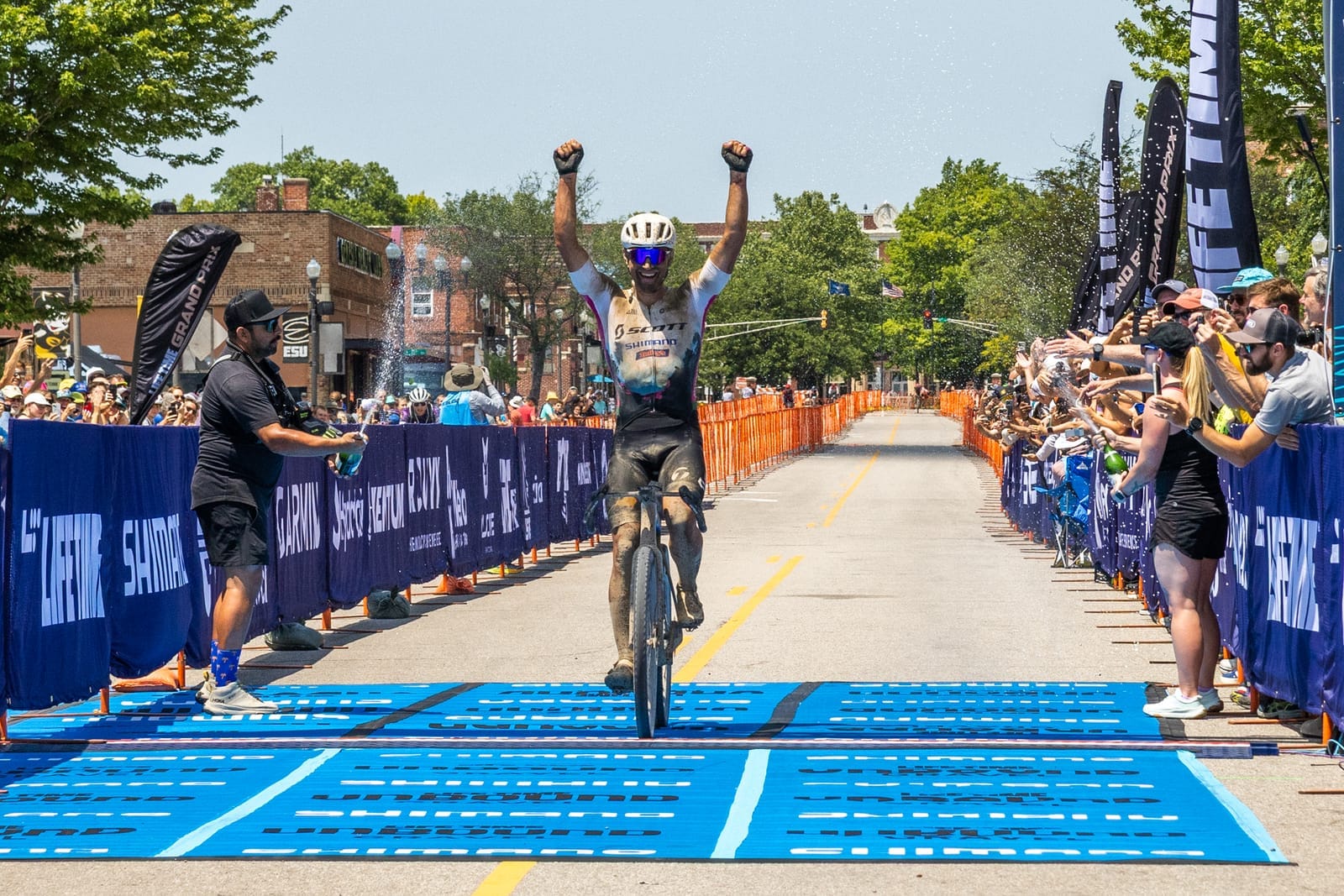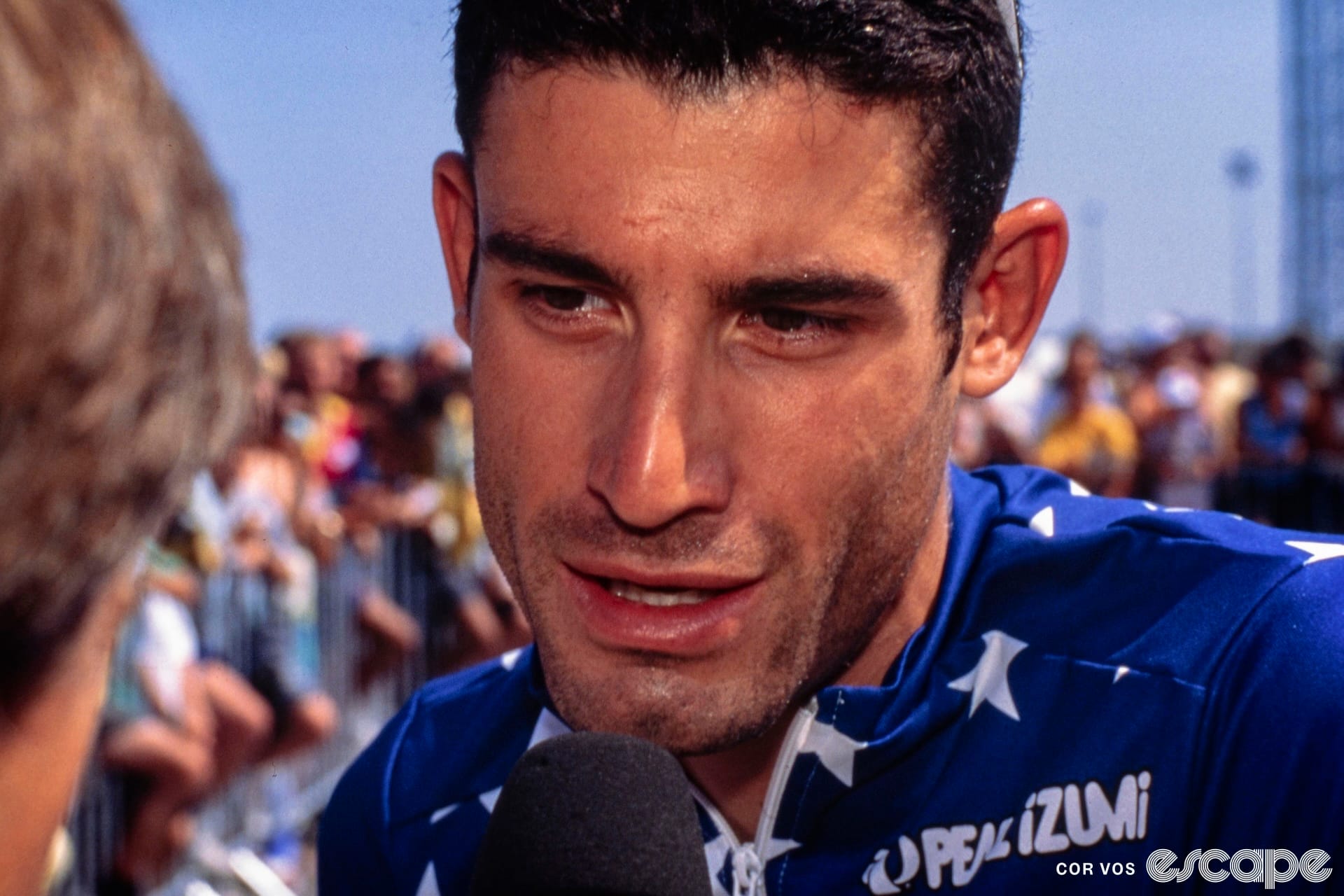After 11 days of attritional racing, spectacular displays of skill, and thrilling entertainment, the first-ever UCI Cycling World Championships are over. It was a bold idea and an even bigger undertaking. Thirteen distinct championships and 8,000 athletes from 120 countries drawn together into one ‘Super Worlds’.
There was scepticism. There were doubts. There was one metropolis about to be invaded. There were huge, sometimes prohibitive expenses and visa issues to be dealt with, and weather gods to keep happy … Eleven days later, did it work?
First thing's first: the location.
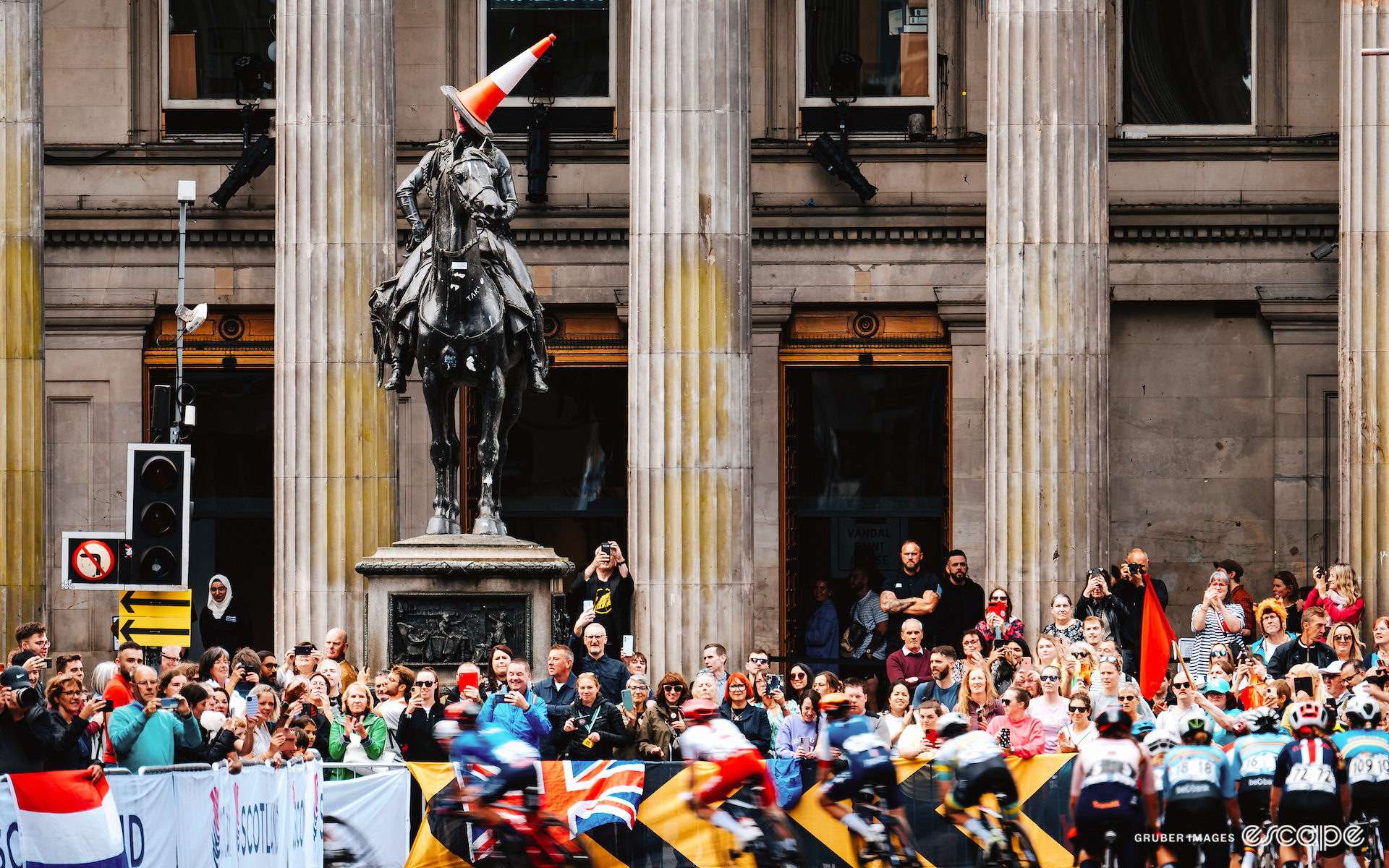
The George Square exit of Glasgow’s Queen Street Station always has a certain grandeur to it. It’s nothing on Edinburgh Waverley, from which you emerge into a natural (ish) amphitheatre with the castle and Old Town on one side and Scott Monument on the other, but Glasgow’s more sturdy urban centre has a certain something too. And with the Cycling World Championships in town and the sun shining, there’s a real buzz.
I’d come from one festival city and emerged into another in the grip of a completely different kind of event. I’d left behind the comedy, quirk, and culture of the Fringe at home in Edinburgh in favour of a festival on two wheels in our more grounded sister city of Glasgow. The bleary-eyed and cagoule-clad performers on the Royal Mile were replaced by a huge number of enthusiastic volunteers in turquoise, moving among fans and bewildered tourists - and disgruntled locals - with smiles on their faces and a helping hand (of admittedly varying quality).
With the best and brightest of the cycling world descending on our verdant land, Glasgow’s city centre was taken over for two solid weeks. Its bustling commercial district and tourist-friendly West End, including the Hogwarts-esque university – not term-time, mercifully – were largely impassable by traffic, and tricky to manoeuvre on foot for the duration.
In the city itself were the road races, BMX, Trials, Indoor, and Track cycling, while other disciplines visited or based themselves in nearby hubs including popular mountain biking spot at Glentress in the Borders, the Downhill Mecca of Fort William, and para-cycling based in Dumfries and Galloway. The UCI hoped we’d compare the ‘Super Worlds’ to something like the Olympic Games, and while obviously, it was not as sprawling as that one-of-a-kind sporting occasion, the hope was that the multi-discipline mega event would draw a little more attention and fans to the lesser-known, less-watched sports like Indoor Cycling and Trials.
In this regard at least, it can be chalked up as a success. Even if it wasn’t physically possible to watch concurrent events at once, you couldn’t avoid awareness of what else was going on around you, on the ground or watching from home.
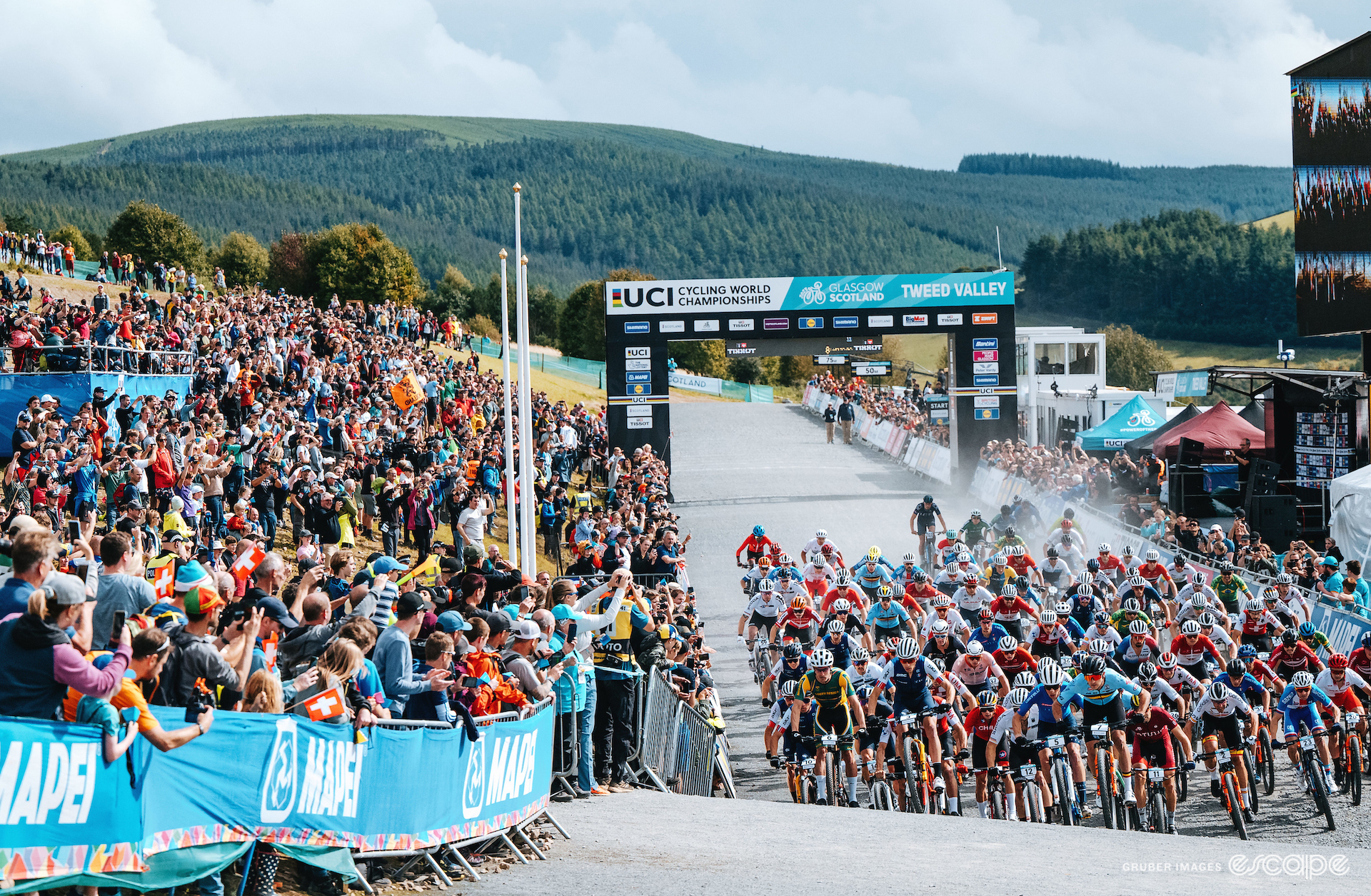
One of the harder questions to answer with the resources we have is whether such a thorough takeover of the city worked so well. What the Olympics has in its favour is that the vast majority of the events take place in purpose-built venues, but with the attention-seeking circuit of the road events so integral to the ‘Super Worlds’, a temporary arena was made out of the city centre. Though there was of course no ticket price for spectators to cough up, Glasgow itself paid a fairly high price.
One of my highlights was a brief conversation I had with a Glaswegian who’d brought his curious five-year-old son out to see what was going on. I met them at the barriers along George Street just as the elite men approached the end of their first lap. The breakaway passed us by, then the Michael Mørkøv-led peloton followed by many groups of weary stragglers, and as each group soared through, I attempted to explain why the breakaway were not strictly speaking ‘winning’ and how the next 10 laps were likely to play out.
I’m sure there were dozens, maybe hundreds of similar conversations around the course and in the days that followed, and I hope that little boy got some thrill out of the lycra-clad superheroes sprinting through his home. But, I also understand that it was distinctly inconvenient for anyone indifferent to the sporting excellence that had taken over their city. Could the road events have been more condensed allowing the roads to be closed for a shorter period? Or would that have reduced the contained festive atmosphere?
There’s one thing I’m fairly sure of: Glasgow came off rather better than Harrogate did in 2019.
Speaking of which, I can go no further without an inevitable mention of the weather, though the ‘Super Worlds’ naturally can’t be held accountable.
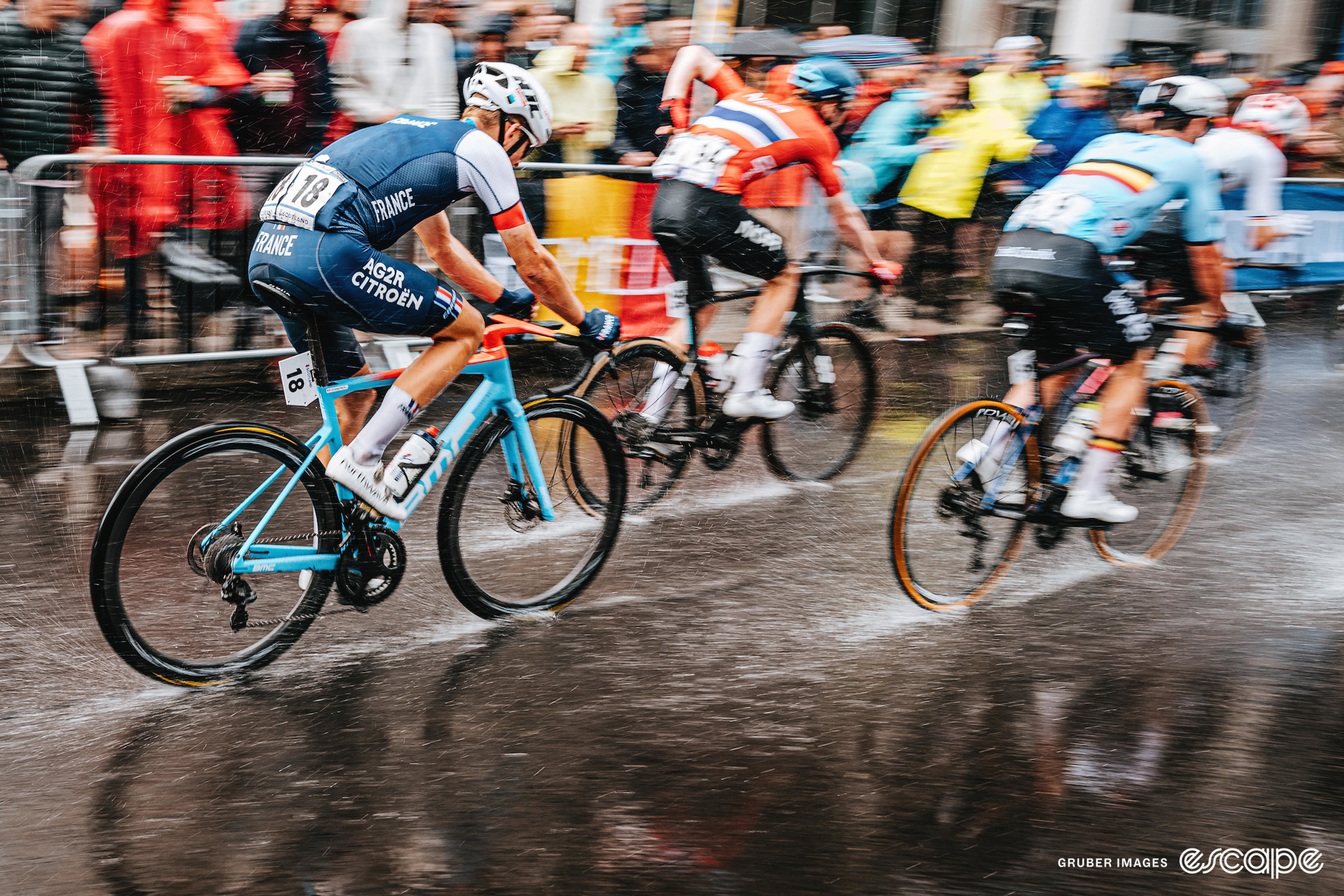
I’ll keep going on about Scotland’s weather being better than the stereotype suggests until I’m blue in the face - no, I’m not even going to bother refuting the Brit-talking-about-the-weather trope. And though there have been some tempestuous downpours, I believe Scotland has done itself proud over the course of the Championships. I’m sure some will disagree with me …
Granted, the combination of weather and the controversial Glasgow circuit (more on that in a minute) conspired to make the under-23 men’s race downright daft on Saturday, and the damp roads after overnight rain surely contributed to some of the heavy crashes during Sunday’s elite women’s race, not to mention Mathieu van der Poel’s slip-and-slide last weekend. But in most instances, it wasn’t really the weather that was the problem, and in many, it heightened the drama.
Joe Lindsey covered one of the most controversial and unfortunate stories of the ‘Super Worlds’ in the UCI’s last-minute MTB grid rearrangement, so I’ll leave that there and focus on the other big question mark of the event: the Glasgow finishing circuit for the road races.
I’m not going to go into too much detail, but I will at least begin by saying I thought it was great. As far as race parcours go, this was the most exciting I’ve ever seen, if a little bonkers. Each road race was about as honest as you could hope it to be, a survival of the fittest, for once earning the overused adjective ‘attritional’, each winner absolutely deserving of their shiny new jersey and ‘heilan coo’ mascot.
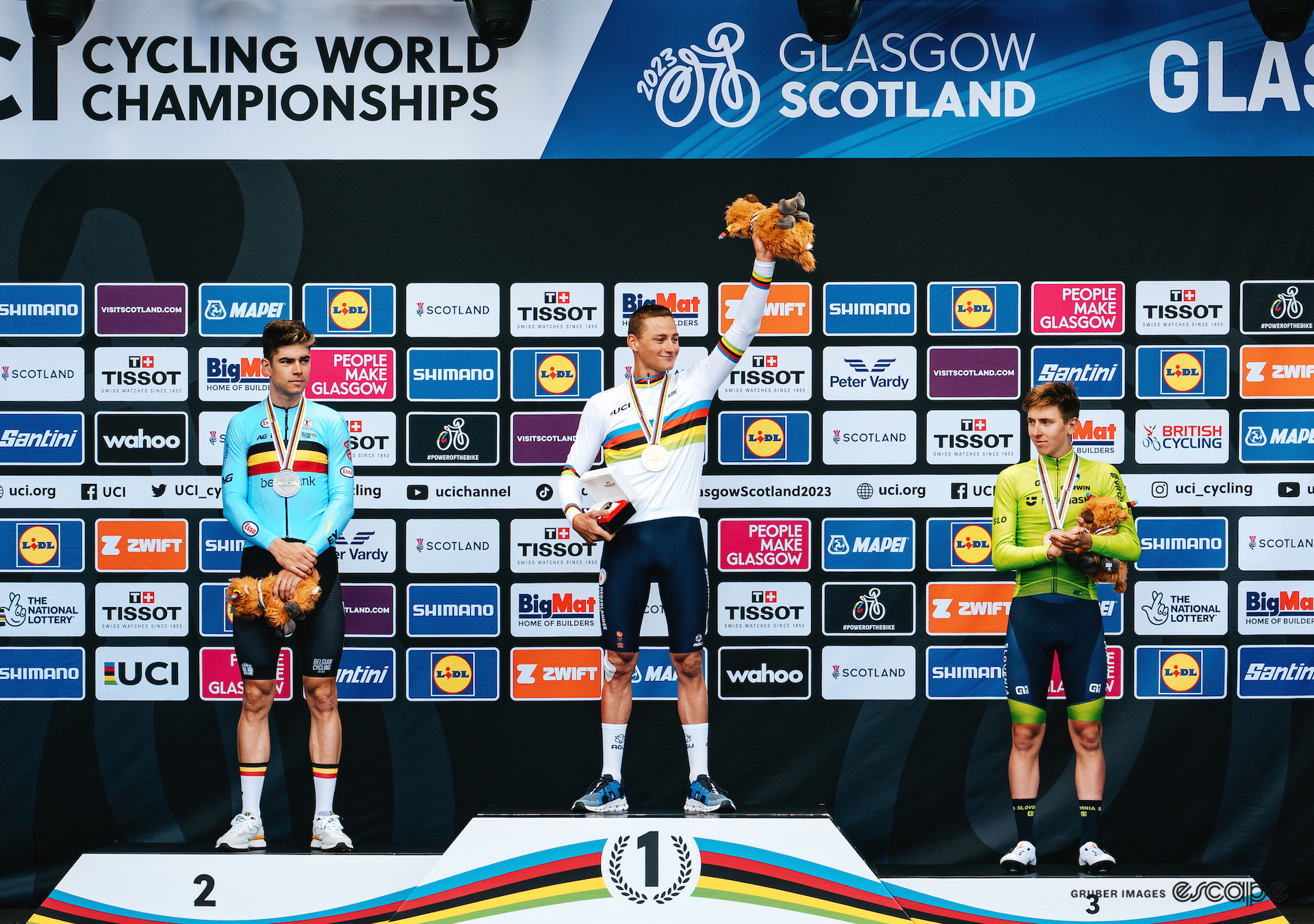
When the laps began to stack up and then the rain fell, the course entered treacherous territory. There were many vocal critics in the run-up, few more so than Johan Bruyneel and Thomas Voeckler. The French national team coach and former pro said the “criterium course” wasn’t worthy of a world championship, with far too many corners, manhole covers and patchy road surfaces. Besides the toughness of racing on such a circuit, the interminable changing in direction and narrow roads threw up additional nasty consequences as crashed riders were forced to wait where they fell, enduring a longer than reasonable delay as medical services attempted to navigate the route and the long tail of the convoy.
In hindsight, Voeckler might have had at least the bones of a point, but what would a world championship be worth if the course was always familiar?
If you take the sun-kissed women’s elite road race in isolation, accepting for the inevitability of crashes whatever the race, you’d be hard-pressed to find compelling criticism. The problems came when the steep and sharp corners combined with the weather and exhaustive repetition to create a unique form of torture for the riders.
In summary, more imaginative routes to anger messieurs Bruyneel and Voeckler, please! But maybe let’s take better care with risk assessment.
Zooming out to the whole event once more, the dust will take some time to settle. Next year things return to normality, or as normal as things can be in an Olympic year, but we’re already promised another ‘Super Worlds’ in Annecy in four years and the organisers will surely look forward with some big wins under their wheels.
Wins:
- Attention drawn to the smaller events
- Combination of Track and Para-Cycling Track programmes in an integrated schedule
- Festive atmosphere made it an incredible fan experience
- Brilliant competition and worthy winners
- Weather
Losses:
- Overlapping events made things awkward for multi-hyphenate athletes, though they are a minority
- Same issue for fans of multiple events
- Weird timing in the year makes for tricky planning within the whole season
- Disgruntled locals
- UCI doing UCI things
- Weather
Did the Super Worlds work? In short: yes. But it’s probably a good thing it’s not every year.
Did we do a good job with this story?

